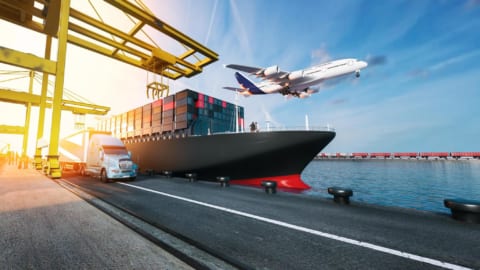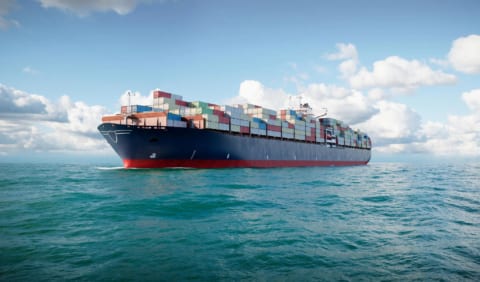Many businesses find it hard to understand what exactly co-loading means in freight consolidation.
What does co-loading mean in freight consolidation?
In freight consolidation method, co-loading is the equivalent of journey sharing. It stands for the consolidation of shipments owned by multiple companies on the same shipping vehicles. The shipments can be combined together under LTL (Less than Truckload), multiple LTL or TLs terms to make co-loaded transportation.
The difference between co-loading and LTL shipment in freight consolidation
When it comes to co-loading, shipments don’t go through the LTL carrier’s hub-and-spoke network for consolidation. By using multiple- stop truckloads, they are consolidated. The only parallel between co-loading and LTL shipping is that one truck is shared by multiple companies.
The advantages of co-loading in freight consolidation
Co-loading in terms of freight consolidation can offer a wide range of benefits to both shippers, recipients and especially the society.
Benefits to shippers:
- Lower transportation cost
- Lower lead times for LTL shipments
- Lower risk of damage or loss for cargo in LTL shipments
Benefits for recipients:
- Offer the opportunities to decrease inventory
- Offer the opportunities to decrease receiving costs
Benefits for the society:
- Low CO2 emissions
- Lower the congestion and depreciation of readway
The disadvantages of co-loading in freight consolidation
Though co-loading can result in many benefits in the consolidation process, it still has some drawbacks . It is not appropriate to every form of shipment. There must be an alignment formed between multiple companies to generate co-loading. To fit on the same truck, it’s important that the goods are compatible, and timing should work.

What are the best types of shipments with co-loading in freight consolidation?
Co-loading means that the shipments (consolidation) are handled in the same way. The shipments, for instance, are all palletized, transported under the same term of transportation vehicles. From the consolidation size viewpoint, it’s an ideal combination when larger LCL shipments are mixed to smaller truckload shipments. And from the geographical perspective, shipments that close propinquity to origins and destinations have a higher potential for co-loading. From an industry viewpoint, co-loading shipments from the same industry are favorable but not required.
Why hasn’t co-loading become more popular in freight consolidation?
Together with freight consolidation, co-loading has been operated for a long time. Since trucks could stop across multiple locations and form a mul-ti stop truckload. But it hasn’t grown to turn into another transportation form until now due to two main reasons. To make it happen, co-loading operation needs innovative technology, which was not readily available. Several years ago we began talking about big data, and found a way to create value by using it. Nowadays, technology enables us to evaluate transportation data seamlessly across firms, make co-loading decisions.
Another point which has a crucial role in the development of co-loading in freight consolidation is the collaboration. Companies have recognized that they can benefit from collaboration when other modes are impossible. Co-loading is a type of horizontal collaboration with high potential and natural spots to start. This also enables companies to slightly lower the continuous increase of transportation costs in freight consolidation.
Are there any different variations of co-loading in freight consolidation?
Depending on the particular situation in freight consolidation, co-loading can be completed in two forms:
- Opportunistic: the co-loading shipment is generated when the timing, size of shipment and some other factors concur to make it occur. In this type of variation, companies take advantage of opportunities when and if they happen.
- Planned: in this type, companies plan to make co-loading possible by adjusting either or both size and volume of consolidation.
Planned co-loading is much harder to parallel since throughout the supply chain, it can affect inventory decisions. And the shipment and size cannot always be controlled by shippers. However, planned co-loading can provide economical benefits. It seems that starting with opportunistic is often easier, then companies can expand to planned whenever possible.
How does co-loading benefit a company’s consolidation service levels?
In freight consolidation, for LTL shipments, co-loading lower lead times to buyers. LTL is often the slowest form of shipping, as the way consolidation is operated in the hub-and-spoke network. Co-loading will not affect significantly on truckload or intermodal shipping operation. As truckloads provide the same service levels as multi-stop truckloads.
In freight consolidation, the larger the number of stops on a multi-stop truckload, the larger the risk for delays. That is why it’s essential to properly build multi-stop truckloads in a path that minimizes that risk.
How does a company apply co-loading into freight consolidation practice?
To carry out co-loading in freight consolidation, there are two way below:
- DIY- Do it yourself: in this way, shippers need to identify potential partners. To be more specific, they have to share data and optimize supply chain engineering resources together. That’s the way to find out whether any co-loading possibility exists. At least one of the co-loader is responsible for the transportation execution activities. That will ensure collaborating partners will realize the economical benefits.
- 3PL- 3rd party logistics provider: Co-loading activities can be well arranged through a 3rd party. They are capable of managing and operating co-loading activities. A 3PL company can generate a more scalable co-loading network proving greater benefits.
WeDo’ 3PL services
Our company provides 3PL services on a user-friendly interface. Visit here for efficient cost-effective solutions and get an instant quote.










